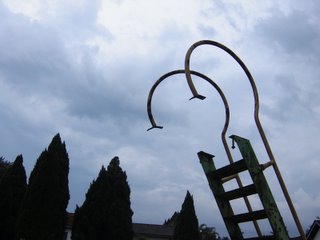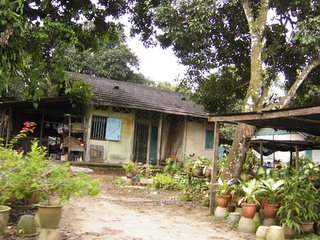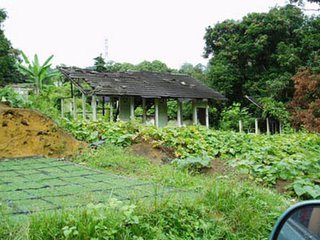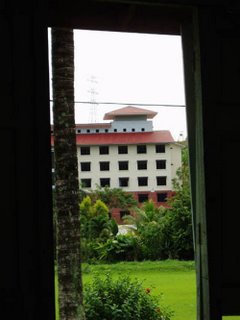In time, to come
“Sad flower, forced open.” I was reading in bed when I came upon those words the first time. It was a drizzly winter's morning in Oregon. No birds, they’d flown south, just cold, wet and grey. I keeled over. I sucked in deep. Four words, forty thousand watts of juice, and another forty thousand more miles of learning how to see.
Juan Ramon Jimenez’s elegant line leans towards grief and lost potential. It speaks of the tragedy when a work – any work – is not given its due process, when forced gestation leads to failed gestalt. Lost potential. How true, oh how true. The Spanish Poet Laureate doesn’t condescend, just sadly, firmly observes. And to me, it exudes a steadfast resolve that the creative act must pick and peel all plausible options before it is deemed right. Pick and peel every step of the way.
Juan Ramon’s aphorism also reaffirms my deep disdain for the faster-faster culture we’re so accustomed here in Malaysia. As if the hallmark of creativity is how fast you can churn out a pretty drawing. Or how swift you cut and paste. Wait, what about depth, what about how it fits society, what about its growth? Aiyah, whaffor we tokk RnD - no market, waste time, waste money; that one let Mat Salleh people do, let Japanese do. You faster-faster.
The result? Our landscape festers with sad flowers. From our transport system to malls to entire townships to high-rise apartments, you come across fields and fields of sad flowers. It alienates our Being. That's largely because the people who are in the driver's seat and can make a difference refuse to make that difference. After all, they learned real quick that flowers aren't currency, cash is.
Design is hard work. It teases you like a bully, mocks your intelligence, kicks sand in your face, and disappears when you think you’ve finally made a true friend. I hate it yet I can’t live without it. I avoid it, give it the cold shoulder and yet I return to it.
Design is hard because it is ultimately simple. As a haiku is simple. As E=mc2 is simple. As a calligrapher’s stroke is simple. As a courtyard is simple. Simple and far-reaching. Far-reaching and simple. Resonant, paced like a heart-beat, dark as a waterfall at night, eternal as love.
Embodied in every truly simple nugget is that door Elegance, which opens to a world of relationships and runs deep – through it, you see and feel. It is seldom dressed in pin-stripes. It isn’t pretty, it is beautiful. That same door, sturdy and true, belies the pains, questions, thoughts and feelings, contemplation, experiences bitter and sweet that a person necessarily goes through before reaching silence. If ever.
To truly approach design, it asks one thing from you: Be naked.
Then, be prepared to walk. Walk a lot. Goethe wrote: “Do not hurry. Do not rest.”
The design process is an uncharted trail that brings one to meadows and fresh springs, and dank abysses so foul you tremble at its walls. You tumble because you cannot see, rats gnaw at your ankle, and worse, you see yourself in the mirror. But you remember the moonlight, and you go on. You remember the hardness of rock, the whipping of lallang on a breezy day, and your four-year-old sister’s toothy smile after she pulled out her first earthworm.
And you want to soak in all this, pack it in a brown paper bag and share it with your neighbour. That’s easier said than done. I’ve never come across a person I respected as a designer who has said design is easy. Never.
The artist Giacometti wrote in a letter: “… I don’t understand it, but that’s how it is. I see my sculptures before me; each one…a failure. Right, a failure. But in each there’s something of what I want to create someday.”
I’ve heard many who claim to be designers say design is so easy, but that’s another story about another tribe. A tribe whose moral compass points unerringly towards the spire of cash registers and whose idea of design is a two-minute flip through a pretty magazine and pasting post-it notes over somebody's published work.
As for me, I’m learning - there's forty thousand more miles of learning how to see, much less design. The walk will be long, no doubt. And I'll fall and there will be scabs. But there are friends, kindred spirits to my left and right and we'll chug along riding on the coals of hope that someday, we’d get to gaze at flowers nurtured right - blooming in their full glory - arrived at without hurry, without rest.




